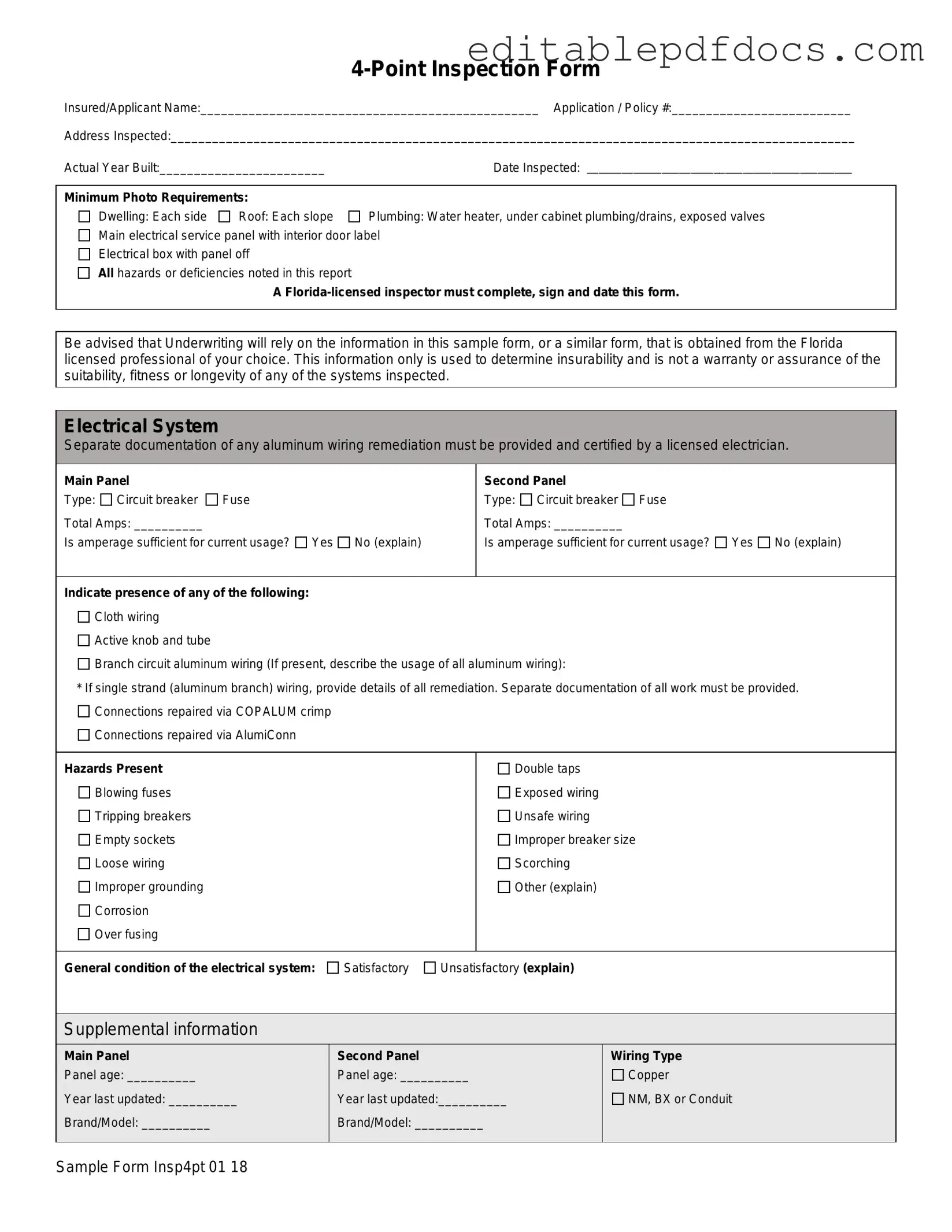Filling out the 4 Point Inspection form correctly is crucial for ensuring that the inspection process goes smoothly. One common mistake is failing to provide complete information. Each section of the form requires specific details, such as the actual year built and the date inspected. Omitting this information can lead to delays or complications in the underwriting process.
Another frequent error involves the photo requirements. The form specifies that photos must accompany each inspection section. Many people neglect to include all necessary photos, such as those of the roof slopes or the main electrical panel. Without these images, the form may be deemed incomplete, which can hinder the evaluation of the property.
Inaccurate descriptions of the systems inspected is also a problem. For example, if the electrical system is marked as "satisfactory" when there are known issues, it can create significant problems later. It is essential to provide honest and thorough descriptions of any hazards or deficiencies observed during the inspection.
People often misinterpret the requirements for signatures and licensing. The form must be signed and dated by a Florida-licensed inspector. Some individuals mistakenly think that a non-licensed person can complete the form, which is not acceptable. Ensuring that the inspector is properly licensed is vital for the form's validity.
Additionally, many forget to include supplemental information about the systems. For instance, the age of the HVAC system or the type of plumbing pipes should be noted. This information is necessary for underwriters to assess the property's condition accurately.
Finally, agents sometimes submit the form without reviewing it thoroughly. It is the agent's responsibility to ensure that all sections are completed and that all requirements are met. Submitting a form with missing information or inaccuracies can lead to rejection of the application, causing unnecessary delays for the client.
